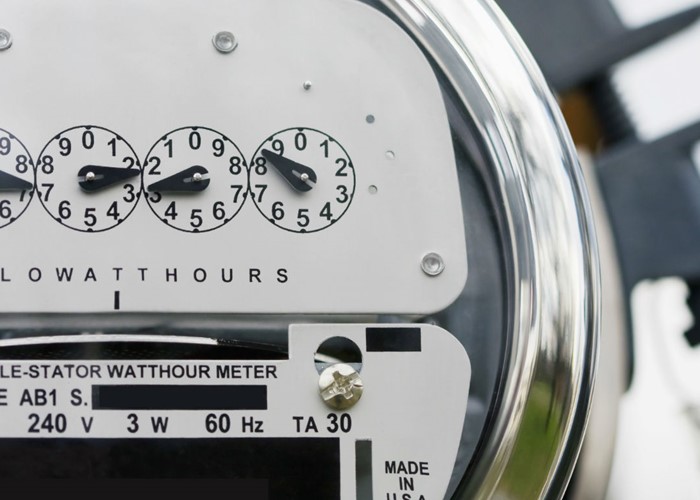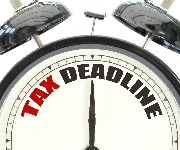Energy Price Guarantee, Price Cap, bill support: what next for energy bills in 2023?

The regulator is set to slash the energy price cap by almost £1,000, but households have still been told to brace for a further £500-plus hike to their annual bills. We explain what's going on.
Wholesale energy prices have been falling in recent weeks.
As a result, Ofgem, the energy regulator, is to slash almost £1,000 off the Energy Price Cap – theoretically, the maximum amount a typical household can pay for their energy each year – in April.
While that may sound like great news, the reality is it won't actually benefit us at all.
In fact, households should expect their average energy bills to jump by more than £500 from April.
That's going to wreak havoc with our budgets, which are already being rocked by soaring food, broadband, phone prices and more.
So why are bills set to rise despite a reduction in the price cap?
Additional energy bill help about to end
While the Energy Price Cap would normally dictate the maximum amount we could be charged for our bills, there is another measure that's been in place since the start of the colder months which trumps the cap.
Launched in October, the Energy Price Guarantee has actually been keeping bills far lower than the Energy Price Cap would normally do.
So, really, this is the only measure that matters for as long as it remains the cheaper of the two.
The bad news is this Guarantee is set to rise in April, adding £500 to a typical annual energy bill.
However, it'll still be lower than the Energy Price Cap despite the increase – and the fact the latter is being cut by £1,000 at the same time.
So this will remain the measure by which our bills are set.
That is why you're provisionally going to see bills rising by £500 this Spring despite Ofgem slashing the official price cap.
As if things weren't convoluted enough, there's a third Government measure at play here that's impacting your bills.
The Energy Bills Support Scheme has effectively been knocking around £67 a month off your monthly costs since October.
But this help also ends on April 1, meaning you're going to have to fund the difference yourself in addition to the aforementioned £500 hike.
That's why we say that bills will rise by more than £500 come April.
It's fair to say the energy situation is pretty confusing at present.
To help you better understand what's going on, here's a detailed look at how each of the three measures work, how much they currently charge, and why things might yet change before the April hikes arrive.
The Energy Price Cap
We will start with the Energy Price Cap, though it’s easy to forget it still exists given the introduction of the Energy Price Guarantee ‒ more on that later.
The cap is set by Ofgem, and it is reviewed four times a year (every three months).
While it is superseded by the Energy Price Guarantee, when that drops out of use the Energy Price Cap will once again be an important defence against suppliers completely ripping customers off.
The cap only applies to standard tariffs, but given the way the energy market is today, those are the deals most of us are currently on.
For the January to March 2023 period, the cap was set at an eye-watering £4,279, but Ofgem has now confirmed that from April onwards it will drop to £3,280.
While it doesn’t affect any of our bills right now, it’s a useful insight into what’s happening on the wholesale markets and what that could mean for our energy bills.
The Energy Price Guarantee
Then there's the Energy Price Guarantee, which was introduced under the Truss Government in response to the rapid increases to energy bills and acts as a cap on the unit cost of the gas and electricity that we use.
It was initially set to run until April 2024 and would have meant the typical household would pay around £2,500 for their annual energy use (remember that's just the average bill: your bill could be higher or lower depending on your energy usage).
However, the upheaval that followed the disastrous mini-Budget meant a change of plan, with this first iteration of the Energy Price Guarantee coming to an end in April 2023 instead.
It will then be followed by a second version of the guarantee, where unit costs are again frozen, albeit at higher levels.
This second version runs until April next year and would mean that the typical household would pay around £3,000 for their annual energy use.
The Energy Bills Support Scheme
Another effort at helping people deal with rocketing bills was the Energy Bills Support Scheme.
This is a £400 discount on your energy bills and has been broken into six stages, each worth £66 or £67.
It means that each month between October 2022 and April 2023 money from the Government was paid directly to your energy supplier, leading to a discount on your monthly payment.
If you pay your bill by direct debit, then you don’t have to do anything in order to benefit from the discount ‒ it’s paid directly to your supplier.
However, if you have a prepayment meter then you should be sent vouchers for that discount in the middle of each month.
These households have had issues, however, with the BBC reporting that around one in five vouchers were not cashed in during November 2022.
Given the time-limited nature of this particular support scheme, you will likely see your monthly repayments increase once again from April.
What next for energy bills in 2023?
We are in something of a perverse spot when it comes to our energy bills.
Ofgem has just announced an enormous reduction in the size of the Energy Price Cap, a clear response to the way that wholesale costs have been falling for some time.
And yet households across the UK are instead facing their energy bills going up, courtesy of the increase to the Energy Price Guarantee and the removal of the support scheme.
That this is coming at a time when household finances are already incredibly stretched is deeply worrying.
The reality is that the higher energy bills which will be in place from next month will be the straw that broke the camel’s back for some, and tip them into real financial troubles.
The Government is being lobbied to cancel that planned increase to the Energy Price Guarantee, and given the fact that its tax receipts have been higher than anticipated, it may have the wriggle room to do just that.
Looking over a more long-term basis, we may soon reach the stage where suppliers are able to return to something approaching normality.
That means offering new fixed tariffs, allowing households to once again shop around and switch to a new package.
This would be a huge development, not least because it would mean that once again people can sign up to deals which will be more competitive than those protected by the Energy Price Cap.
It would be wrong to be complacent about this, however.
We don’t really know yet how these lower wholesale costs will translate into our actual energy bills, particularly when it comes to launching new tariffs.
While there is cause for some optimism, only time will tell if we do see any meaningful reduction in our energy bills.
Most Recent
Comments
Be the first to comment
Do you want to comment on this article? You need to be signed in for this feature








